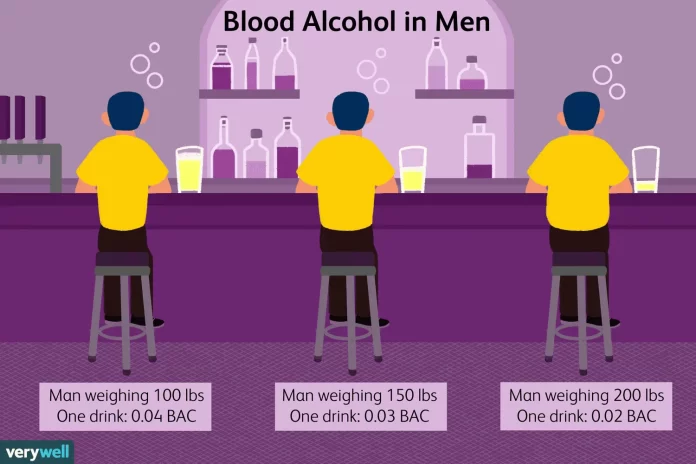If you’ve ever pondered on why different types of alcoholic beverages can affect people in varying ways, a key element you need to understand is the Blood Alcohol Concentration (BAC). BAC is a measurement of alcohol in the bloodstream, expressed as a percentage. Like, a BAC of 0.10 means that 0.10% of your total blood volume is alcohol. This measure is used legally in many countries to define intoxication and consequently, to police the operation of vehicles.
Alcohol comes in many different forms, from beer to wine to spirits, each with its own unique alcohol content and method of consumption. Understanding how these various drinks affect your BAC is essential not only to make safe, responsible decisions when drinking but also to comprehend how alcohol affects you physically and mentally.
Table of Contents
An Overview of Blood Alcohol Concentration
Before we discuss the effects of different types of alcoholic beverages on the body, it’s important to first understand what Blood Alcohol Concentration (BAC) is. BAC is a measure of the amount of alcohol that is in a person’s bloodstream. It is usually expressed as a percentage. For example, having a BAC of 0.10 means that there are 0.10 grams of alcohol per 100 milliliters of blood in your body. This is often used as a metric to ascertain alcohol impairment in legal and medical settings.
Several factors can influence a person’s BAC. Some of these include body weight, rate of alcohol consumption, food consumption, and metabolism rate amongst others. It’s important to regularly monitor your BAC levels because high BAC levels can have harmful if not fatal effects on the body. Having an understanding of your BAC can help gauge your tolerance to alcohol and plan your consumption such that you keep within safe limits and avoid drunk driving or other alcohol-related accidents.
How Various Drinks Influence BAC
Different types of alcoholic drinks can have different effects on your BAC. Beer, a beverage that usually has a lower alcohol content compared to other alcoholic drinks, can be drunk in large quantities of beer without feeling overly intoxicated due to the low alcohol content (at least for some people). However, it’s important to remember that this can still lead to a substantial BAC, depending on the quantity consumed, the time taken to consume it, and how much food has been consumed by the individual.
Wine typically contains more alcohol by volume compared to beer, leading to a quicker rise in BAC. Intoxicating substances like spirits and hard liquors typically have an even higher alcohol content, sometimes as high as 40% alcohol by volume. This high percentage means even small quantities can lead to a rapid and significant increase in BAC. The takeaway is that while the type of drink is a factor, ultimately it’s the amount of alcohol consumed in totality, along with other factors like body weight and rate of consumption that heavily determines your BAC.
Myths and Misunderstandings about Drinks and BAC
When it comes to understanding the effects of alcohol and BAC, there are a plethora of misconceptions floating around that often lead to risky behavior concerning alcohol consumption. One prevailing myth pertains to the negation of alcohol’s effect: many people wrongly believe that consuming coffee, a cold shower, or exercising can sober up an intoxicated person and reduce BAC quickly. The reality is, that only time can lower BAC as the liver metabolizes alcohol at a fixed rate.
Another widespread misunderstanding lies with the influence of different types of alcoholic beverages. It’s common to hear claims that certain types of alcohol get you drunk faster, or darker liquors give you more severe hangovers. While it’s true that beverages with higher alcohol content can increase BAC faster, the rate of intoxication mainly depends on the total amount of alcohol consumed, not the type. Darker liquors have more congeners (impurity substances), which might intensify hangover symptoms but the severity of hangovers is generally linked to overall alcohol intake, not the type of drink.
Responsible Drinking and BAC Control
Understanding the effects of different drinks on BAC is the first step towards promoting responsible drinking. It’s responsible to regularly keep tabs on your alcohol intake and ensure that it aligns with health and legal guidelines. When consuming alcohol, pace yourself, try drinking a glass of water between alcoholic beverages to prevent dehydration, and avoid drinking on an empty stomach. These strategies can control the rate at which alcohol enters your bloodstream, helping maintain a lower BAC.
If you unfortunately end up getting cited with a DUI (driving under the influence), the first step should always be to remain calm and cooperative with the law enforcement officers. Remember, anything you say can and will be used against you in court. It’s advisable to avoid self-incriminating statements or behavior. Contact a few DUI lawyers as soon as possible to guide you through the legal process. It’s important to understand that a DUI citation is a serious matter with potential legal, financial, and personal implications. Responsible drinking remains the best prevention strategy against DUIs.
With the vast variety of alcoholic beverages available, it’s important to understand how each drink impacts our BAC, which in turn affects our mental and physical function. This information doesn’t just heighten our understanding, but it also helps us to make responsible decisions about our alcohol consumption. As we’ve seen, the kind of drinks consumed, combined with factors like intake rate, body weight, and food consumption, can show significant variations in BAC levels. Regardless of the type of beverages we lean towards, practicing responsible drinking is imperative. This involves moderating intake, pacing drinking, mixing in water, and eating prior to consumption. If ever faced with a DUI citation, remember to act with composure, cooperate with the authorities, and seek legal counsel promptly.








